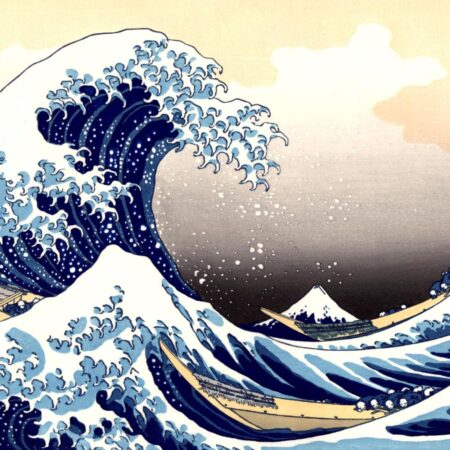Japanese paintings, now popular worldwide, have varied over time depending on the era in which they were created. Let's take a look back through history to see what subjects have been depicted in Japanese art.
Ancient to Heian Period: Myths and the Beauty of Nature
In ancient Japanese art, the subjects often revolved around mythological tales, such as the Kojiki myths, and the beauty of nature. Since paper was not yet available, these themes were represented through rock paintings and Buddhist art, reflecting the religious beliefs and natural surroundings of the time.
Early Heian Period: The Rise of Esoteric Buddhist Art
The Heian period laid the foundations for future Japanese painting. During this era, a monk named Kukai brought Esoteric Buddhist art from China to Japan. Consequently, various types of Buddhist paintings, influenced by Chinese Esoteric art, became mainstream in Japanese art. Artistic expression during this time was heavily influenced by Chinese styles, as artists often imitated the works brought back from China.
Mid-Heian Period: Increased Appreciation for Japanese Landscapes
As the dispatch of missions to China ceased during this period, there was a shift in focus towards Japanese landscapes and seasonal changes. Unlike previous works, paintings began to feature more open and less three-dimensional compositions, depicting the unique characteristics of Japanese scenery.
Late Heian Period: Flourishing Court Culture and Decorative Beauty Influenced by Pure Land Buddhism
During this time, the power of the aristocracy strengthened, leading to a peak in court culture. The popularity of Pure Land Buddhism, which taught that devout practices could lead to rebirth in a pure land, also rose. Aristocrats, deeply engrossed in Pure Land Buddhism, favored lavish and elegant decorations, leading to the creation of Buddhist paintings that emphasized beauty.
End of the Heian Period: The Emergence of Emakimono


This period saw the birth of emakimono, or narrative handscrolls, which became popular as they were favored by the emperor of the time. These scrolls depicted court ceremonies and historical themes, unfolding stories through a combination of pictures and text.
(Image citation: いつか役に立つかもしれないムダ知識)
Kamakura Period: Realism Preferred by the Samurai Class
With the rise of the samurai class in power, the artistic style of Japanese painting shifted towards more realistic and detailed expressions, catering to the tastes of the warriors who lacked the refined artistic sensibilities of the aristocracy.
Muromachi Period: Kyoto and Chinese Cultural Influences
During the Muromachi period, Kyoto's classical culture mingled with Chinese influences. Kyoto, the political and cultural heart of Japan, saw a resurgence of elegant classical culture, supported by the government's vast economic resources. The active trade between Japan and China brought numerous Chinese artworks to Japan, which were favored by the shogunate and the powerful, leading to a blend of traditional Japanese and Chinese artistic expressions.
Edo Period: Scenes of Everyday Life and the Rise of Ukiyo-e

With the capital moving from Kyoto to Edo (modern-day Tokyo) and Japan's isolation from foreign influence, a unique form of Japanese painting emerged, focusing on the lives of common people and the beauty of Japanese nature. Themes of daily life, customs, the buzzing urban life, the elegance of geishas, and the changing seasons became prevalent in Japanese art, known as Ukiyo-e.
(Image citation: 和樂Web)
Modern Era and Beyond: Western Influence and Abstract Expression
Entering the modern era, Western influence became more pronounced, leading to a shift from realism to abstraction. Paintings began to reflect not only landscapes and figures but also emotions and abstract concepts, along with social themes.
Summary
The history of Japanese painting has evolved through various themes over the centuries, from myths and nature to the elegance of the samurai, everyday scenes of the Edo period, and abstract expressions influenced by the West in the modern era. These themes offer valuable insights into Japanese history and culture, highlighting the diversity and beauty of Japanese art throughout the ages.



